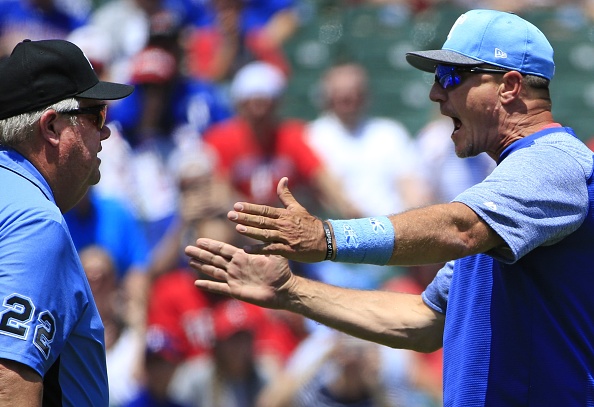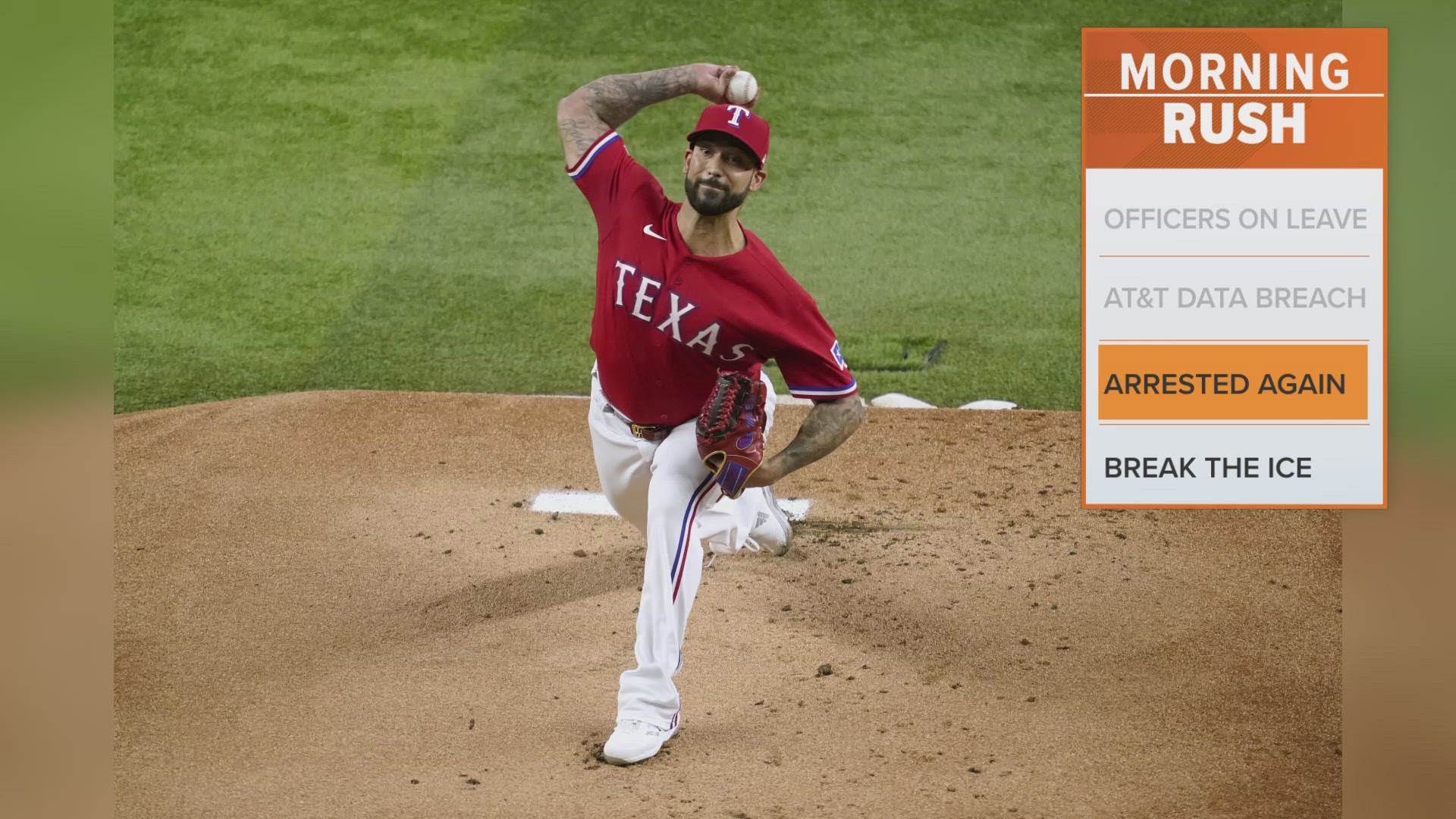In the fourth inning of the Rangers’ 10-3 loss to the Mariners on September 12th, Ryan Rua was called out on strikes by home plate umpire Jeff Nelson. Nelson had been struggling all game long to differentiate between balls and strikes. That’s unfortunate, really, because differentiating between balls and strikes is a vast majority of the job description of a home plate umpire.
Jeff Banister, who had thus far limited his objections to hand claps and “Let’s go, now!”s–the stuff of plausible deniability–had seen enough. He barked something from the dugout that Nelson deemed to have crossed the line, and he gave the manager the old heave-ho.
Here’s the thing: Nelson was wrong.
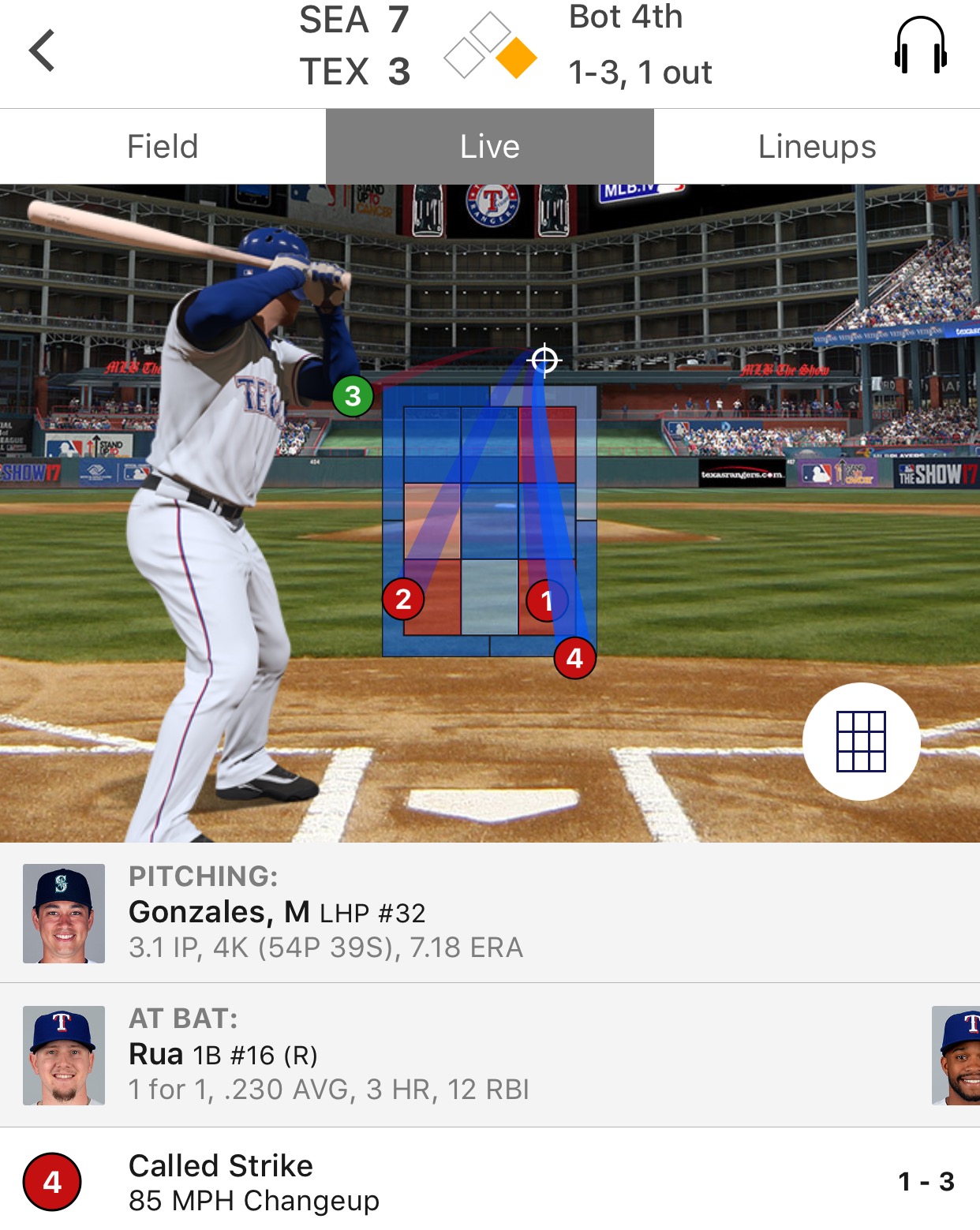
Here’s a photo of the call that finally got Banister ejected.
If that had been the only call, Banister would have likely seen the rest of the game. But buckle in, it had been bad all night. Here’s a called strike to Mitch Haniger in the first inning of that same game:
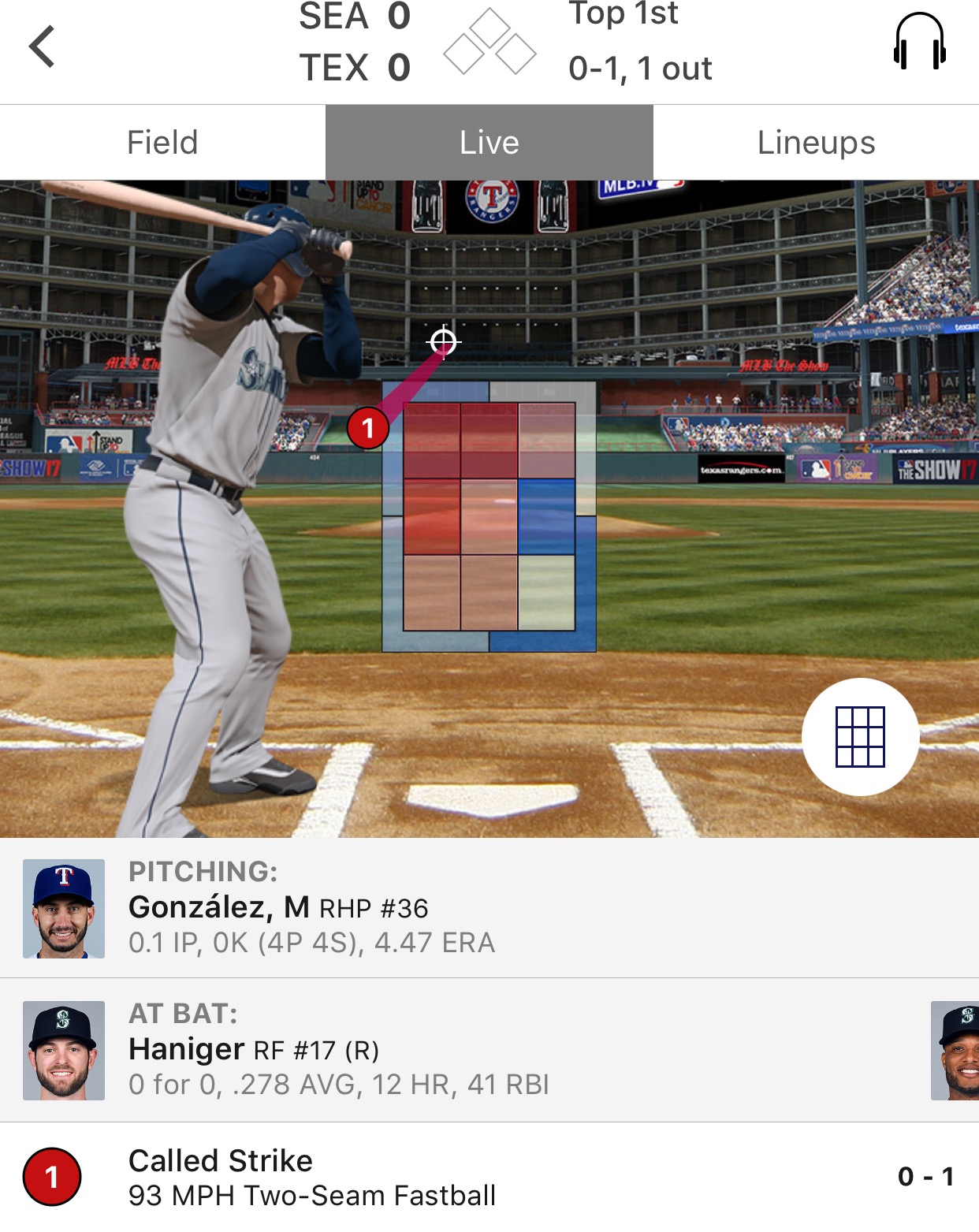
Here’s the start of a Kyle Seager at-bat an inning later:

A half-inning later, these pitches were called strikes to Joey Gallo:
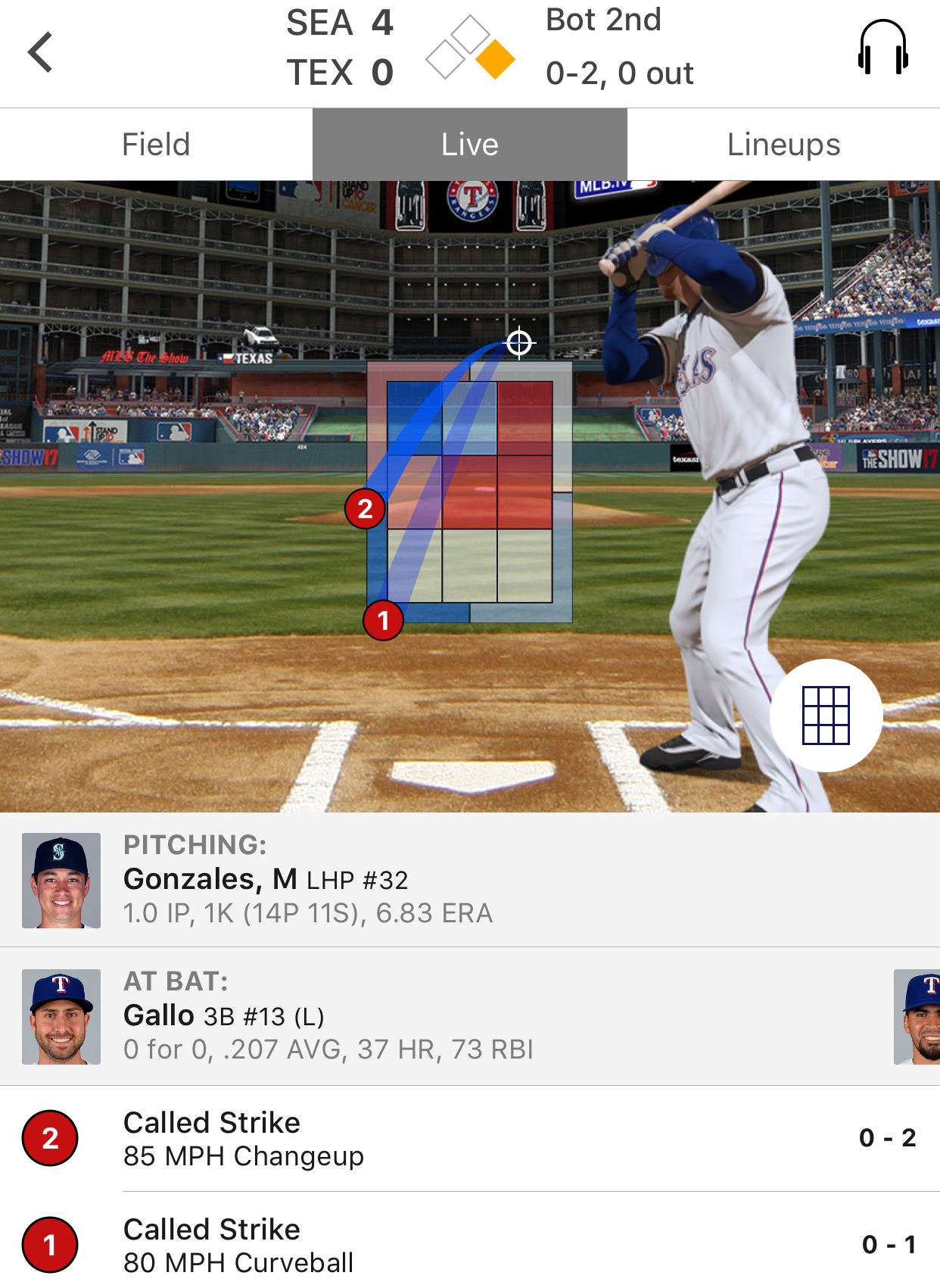
I told you Nelson was struggling.
And I could go on: I have seven more of these from this game alone, all of which are wrong, and none of which are even close to the worst blown calls I have seen this year from watching just one of the 30 MLB teams!
(EDITOR’S NOTE: for those of you who think some of these are borderline 50/50 calls, please note that the little border is not part of the strike zone. MLB expanded their app this year. Here’s the old version. Note where the old and new versions line up with the corner of the plate.)
(WRITER'S NOTE: I am also the editor.)
According to this article by Scott Lindholm, even the very best umpires in baseball get more than 12% of their ball-strike calls wrong. The worst can clock in at over 16%. Jordan Baker, listed in the above article as being among the ten best in baseball, made an egregious call in today’s Cardinals-Cubs matchup that led to an RBI single and the ejection of both John Lackey and Willson Contreras. It’s frustrating when a bad call impacts the outcomes of a game. Worse yet, managers and players have no recourse. If an umpire makes a particularly terrible ball/strike call, the manager’s options are:
- pretend nothing wrong happened
- clap your hands (though this is not a foolproof system either)
- watch the rest of the game from your office.
None of those three have any impact whatsoever in fixing the problem.
When you talk to players and coaches, you don’t hear much support for the advent of “robot umpires” (though one might wonder if the threat of a fine might be influencing those responses). And even those who work in the industry of providing this tech are adamant: we’re not yet ready for the singularity: full robot umps are not (yet) an option.
But bad calls can and do change the outcome of games. Listen, I love the human element. In all sports, and I love baseball more than the rest. I love the human element when we’re talking about the humans that are competing, so I’m not going to listen to any disingenuous comments about “what, should we re-play any play where a fielder makes an error, then? “
Stop it. I’m not looking for an intentionally obtuse Facebook argument about politics. I’m looking for actual solutions here.
The umpires are not here to win or lose, so I really have no time for the “human element” as it pertains to umpires. Their job is to provide a level and fair playing field, interpret the rules, and maintain order.
And there are ways to help them do that better. Here, then, are my suggestions.
1. Time is of the essence.
The one problem people seem to have with replay is that it takes too long, even though the longest replay review I can remember in the Rangers 2017 season has clocked in at 2:15. You can’t just give an umpire the At-Bat app, because the pitches usually take 10-15 seconds to show up. You need something faster.
2. We can’t go full #RobotUmpsNow. (Maybe #RobotUmpsLater?)
Again, the technology is prone to glitches. For instance: Mike Zunino did not watch a 47mph slider above his head before hitting a home run on a 92mph 2-seam fastball that was a foot and a half outside. How do I know? Because I was watching the game.
Here’s the real location of the first pitch to Zunino.
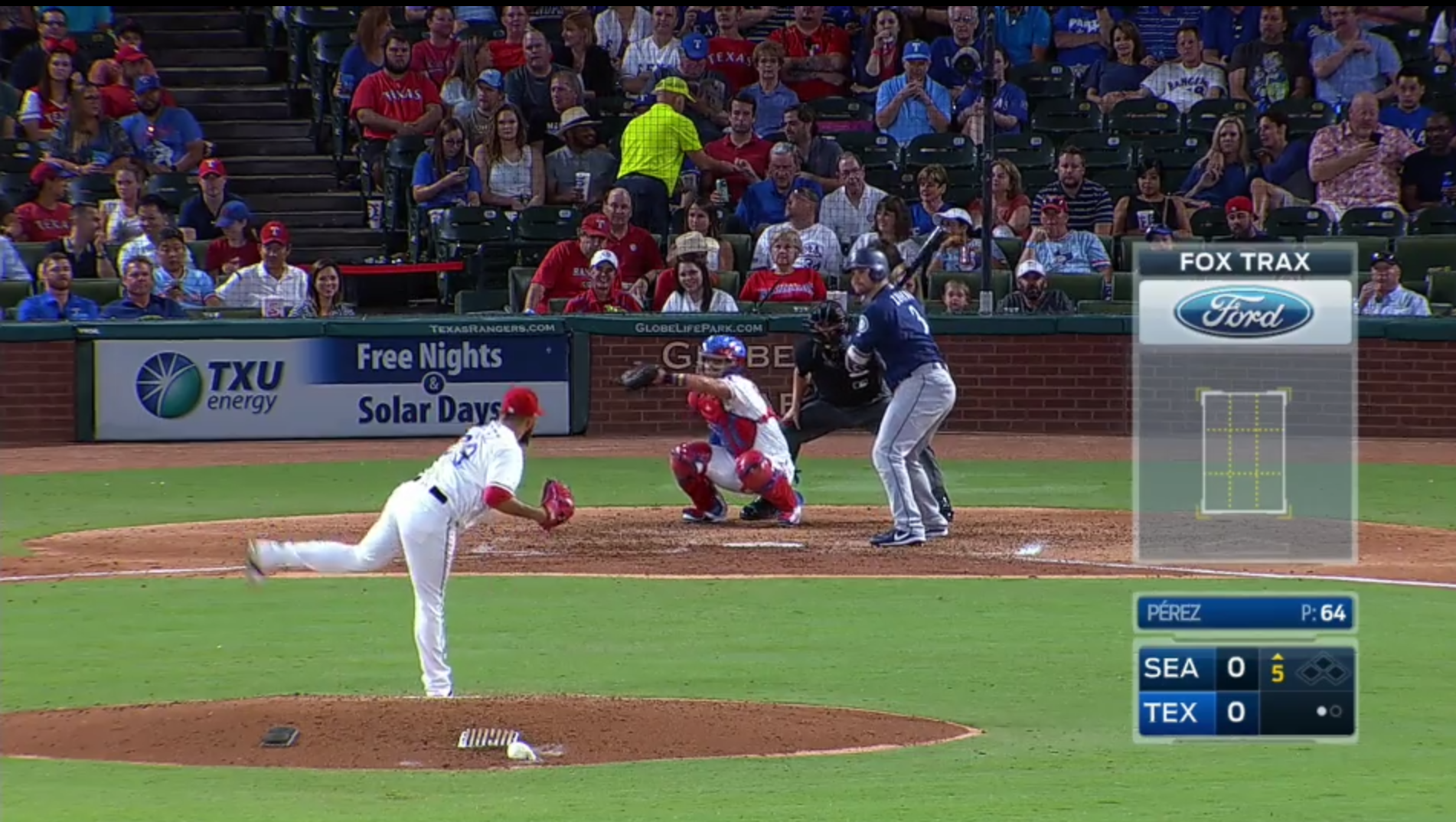
High and outside and 93mph.
And here’s the real location of the pitch he hit 470 feet into the upper deck:

a 79mph curveball below the strike zone and on the inside half.
This is but one example of why technology isn’t quite ready. According to the sources I’ve talked to, the margin of error can be as much as 10-12” on the immediate-response apps, and sites like BrooksBaseball.net adjust the results later for accuracy.
Even the “Fox Box” is not completely accurate. That box is adjusted by television producers, and while it is generally accurate, it’s not precisely accurate, since the producer might have a different interpretation of the zone than the umpire, or–as is the case at Globe Life Park–perhaps the cameras are a little offset towards the left-field side.
But to say that it has to be either full “human element” umps or full robot umpires now is a false dichotomy, just like the argument between scouting vs. analytics. There’s no reason it has to be one or the other. Instead, like more successful problem-solving ventures, why don’t we throw a hybrid of technology, cameras, and umpires at the solution and come up with an elegant, accurate, and immediate system of calling balls and strikes?
3. A solution, in three parts.
A. Take the ball/strike umpire out from directly behind the catcher. This accomplishes a few things: increased umpire safety, and no blocking of the umpires vision. Additionally, the catcher “framing”–a nice skill, but also an exercise in the art of deception–will be less likely to impact the call.
B. Regulate the camera angles in every MLB park to be straight-on, as they are in, say, Pittsburgh. Look at this beautiful angle:
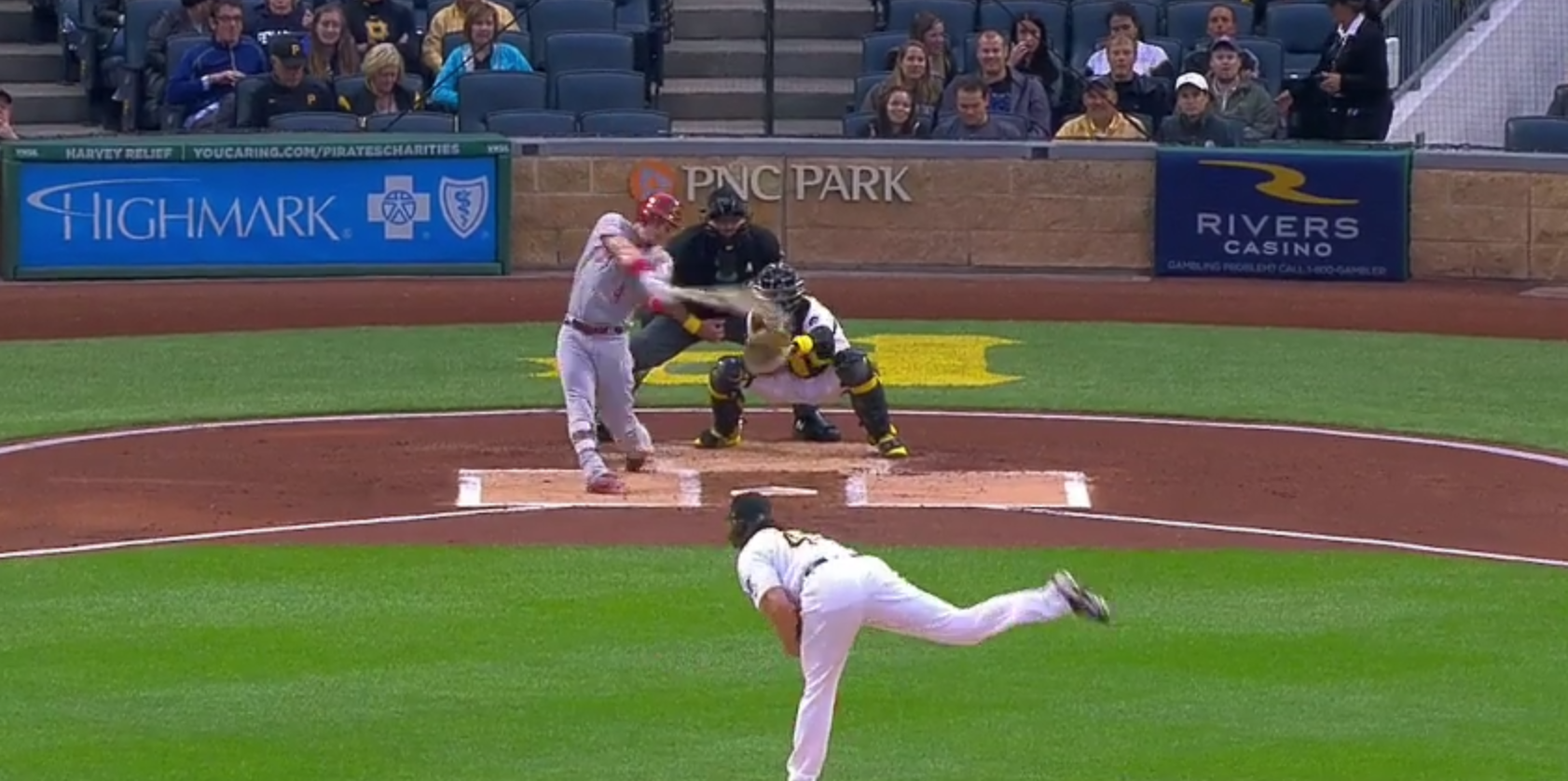
What's that you say, TV producers? Your audience prefers the offset angle?
No they don't. But if you do, that's fine. Keep your offset angle. But every park should have a center angle camera, even if it is dedicated solely to the umpires.
C. Put one umpire near home plate at a safe distance to call out/safe on plays at home and to signal the ball/strike calls, which will be relayed to him via earpiece. How?
D. Put a fifth umpire in a booth in every ballpark and call those balls and strikes, baby! You thought I was going to take away your human element, didn't you? Plot twist! Those 50/50 calls that are on the corner or maybe half a millimeter outside? Ooooh, we’re still gonna get some disagreements.
The umpire’s union should be ecstatic: you’re providing 15 more jobs per night, and once every five nights, every umpire umpire gets a night off his feet to sit in an air-conditioned booth with a headset and an ice-cold Coca-Cola and say “Ball” or “Strike” into a Garth Brooks microphone. If someone disagrees with him, no longer will he have to endure the ire and spittle of a manager or an aggrieved pitcher.
Additionally, umpires will no longer suffer the ignominy of yokels like myself calling balls and strikes more accurately than the guys whose job it is to call the balls and strikes that affect the outcome of the game.
More accurate calls. No slowdown. Human element intact. Fewer white wristbands needed.
Rob Manfred, you’re welcome.

